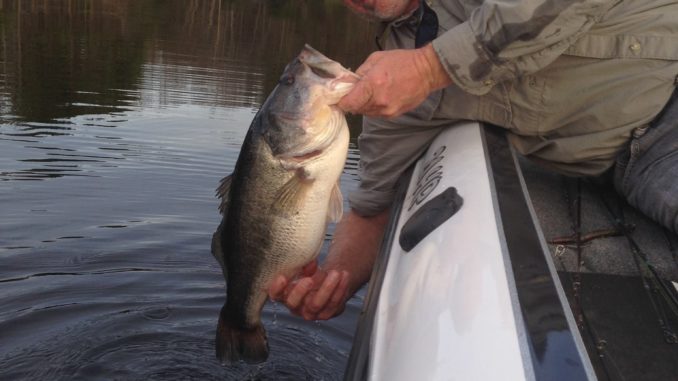
Use these two lures around brush piles for more bites in the cold months
As lake temperatures cool across the Carolinas, the largemouth bass make some changes in their eating behavior, but they will still bite for anglers who know where to find them and what they are biting. For some bass anglers, this time of year is their favorite.
Marc Deschenes of VIP Adventures in Summerville is one of those anglers that loves bass fishing this time of year. And while his favorite lake is Santee, he said fishing this time of year is very similar across most of the lakes in both Carolinas.
“This time of year, a lot of largemouth will head to brush piles, and there’s two main lures I’ll use to target them,” said Deschenes, who finds plenty of brush piles to fish near Black’s Camp.
The first lure he uses is a small crankbait. This is mainly because of the size of forage that is present this time of year.
“I’m just matching the hatch by using lures that are similar in size to what’s present in the lake right now. These bass are trying to fatten up before it gets really cold, and they’re eating what’s available. The bait fish hang around the brush piles to have a place to hide, and the bass hang around to ambush them,” he said.
Deschenes’ other lure sort of contradicts his own reasons for using small crankbaits, but he’s got a reason for that too.
“My other lure is a big, 1-ounce Choo Choo Lures spinnerbait. I know that goes against what I said about matching the hatch, but I’ve found that this time of year, these big lures can trigger the big bass into biting. It cuts down on bites from small fish. And when the big fish are watching all those little baitfish all day long, and they suddenly see a big bait swimming by, it just seems to trigger them into biting,” he said.
When using either of those lures, Deschenes (843-708-5473) said anglers should make sure to run them into the brush piles.
“A lot of people don’t understand that the lip on a crankbait, and the way the hooks are positioned, gives these lures the ability to run into brush piles without getting snagged very often. You just need to keep the lure moving. And spinnerbaits are just as tough to get snagged. You want to bump into the brush because that draws attention, which leads to strikes,” he said.
Anglers need to use their boat’s electronics to help them find brush piles. Deschenes, like many anglers, makes his own brush piles by placing cut limbs from trees like wax myrtles into a 5-gallon bucket, filling the bucket with concrete, then sinking it in the lake, marking it on his depthfinder for an easy return.
Deschenes recently discovered American Fish Tree, a PVC brush pile that is easy to put together, and offers more shade than other artificial products on the market. It is also more durable, easier and quicker to deploy, and can be positioned in a variety of ways.
While it is initially more expensive than Deschenes’ old way of making and sinking brush piles, he said unlike his homemade ones, American Fish Trees will never break down, meaning that once he puts one out, he never has to worry about replenishing it, something he does at least once a year with his wax myrtle brush piles. And unlike the wax myrtles, each American Fish Tree comes with a lifetime guarantee.





Be the first to comment